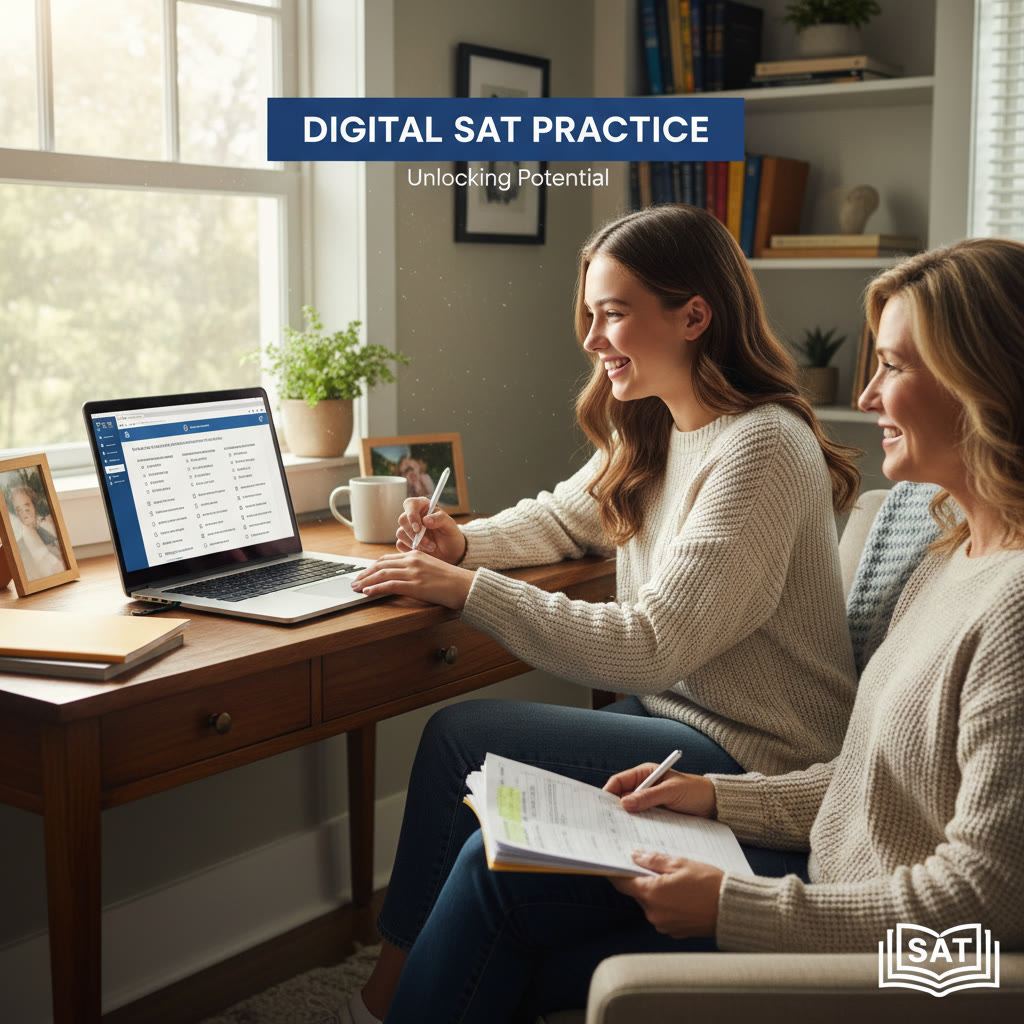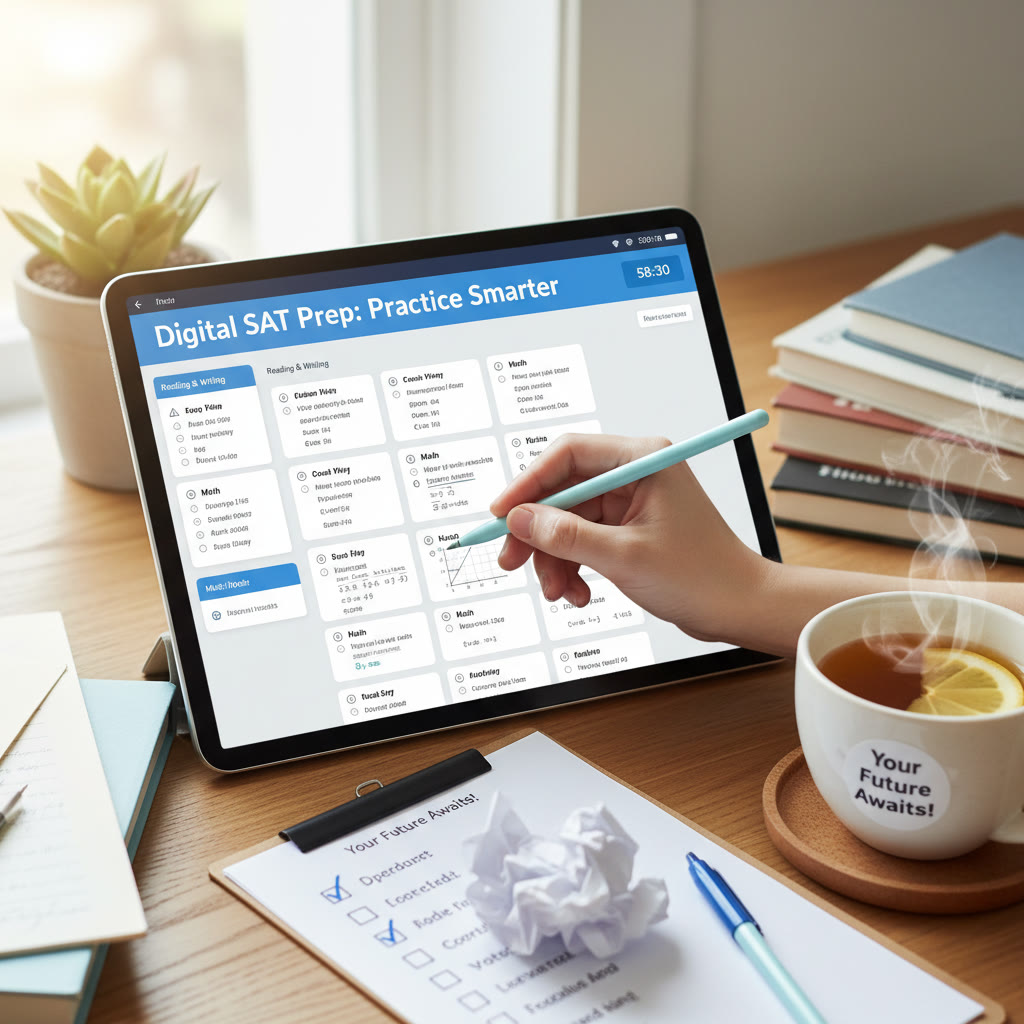Understanding LAU and Why the SAT Still Matters
If you or your child is applying to the Lebanese American University (LAU), you’re in a good place to start planning. LAU is a well-regarded private institution in Lebanon with a broad set of programs and an application process that—like many institutions—looks at academics, preparation, and readiness for college-level work. Among those signals, the SAT remains a meaningful and measurable piece of a student’s portfolio.
This guide breaks down what you need to know about SAT expectations for LAU applicants, how to prepare for the Digital SAT, the timeline to follow, and practical strategies parents and students can use together. Whether you’re aiming for a competitive program or simply trying to submit a strong application, this article gives you a roadmap rather than a list of rules.

What LAU Typically Looks for in SAT Scores
LAU expects applicants to demonstrate college readiness. A practical way institutions measure that is through standardized tests like the SAT (now primarily in a digital format). While admissions decisions are holistic, the SAT score helps contextualize your high school performance against an international standard.
From typical admissions profiles and reported ranges, competitive LAU applicants often fall into a moderate SAT band. These ranges are helpful for setting realistic targets when you plan study schedules, scholarship applications, and retake strategies.
Typical SAT Score Range (What to Aim For)
Most admitted students to LAU tend to have a composite SAT score falling within a middle band. Think of this as a helpful benchmark rather than a rigid cutoff. Aiming for a score that’s comfortably within or above that band improves your chances at program admission and scholarship consideration.
| Element | Practical Guidance |
|---|---|
| SAT Composite (Digital SAT) | Aim for a score in or above the 1020–1235 range as a realistic target for many admitted students; higher scores strengthen competitive program applications. |
| Section Focus | Balanced performance across Evidence-Based Reading & Writing and Math; prioritize improvement in your weaker section. |
| Submitting Scores | Submit official digital SAT score reports as part of the application if required or if they strengthen the file; check application instructions for required documents. |
| Other Considerations | High school GPA, coursework rigor, recommendation letters, and extracurriculars play a role—avoid over-reliance on the SAT alone. |
What That Range Means
Think of the score range as a probability zone: students within the range commonly succeed in admission, while students above the range gain added leverage for scholarships and competitive programs. If your score is below the range, show stronger academic context—higher GPA, rigorous coursework, strong essays—to balance your profile.
Is the SAT Required for LAU?
Admissions policies change from year to year, and colleges occasionally toggle between test-optional, test-flexible, and test-required models. For LAU applicants, it’s essential to confirm the exact requirements for the admission cycle you’re applying to. Historically, many LAU applications have included SAT/ACT as considered elements of the file—sometimes required and sometimes considered if submitted—so don’t assume one policy will stay forever.
If you want certainty, check LAU’s current admissions instructions in the application portal or contact the admissions office directly—but as a rule of thumb, preparing for and taking the Digital SAT remains a smart hedge because it opens doors for merit scholarships and gives a uniform data point for international applicants.
Preparing for the Digital SAT: A Practical Roadmap
The SAT has moved into a digital era. The core skills tested—reading comprehension, writing and grammar sense (within evidence-based reading and writing), and applied math—remain the same, but the format, timing, and delivery style are different. Here’s a step-by-step plan tailored for the Digital SAT and LAU hopefuls.
Step 1: Diagnostic and Goal-Setting
- Take an official digital practice test under timed conditions to establish your baseline score.
- Set a realistic target: use the 1020–1235 range as a reference, but choose a specific target (e.g., 1250 or 1350) depending on your desired program or scholarship ambitions.
- Create a timeline based on the number of months until application deadlines and the number of test dates available in your region.
Step 2: Build a Smart Study Plan
A smart plan balances content review, targeted practice, and full-length digital practice tests. Personalization matters—if algebra is your weak spot, prioritize that; if reading is slow, build focused reading and vocabulary habits.
- Daily micro-sessions (30–60 minutes) for skills practice. Consistency beats cramming.
- Weekly timed sections to build stamina and pacing.
- Monthly full digital practice tests to track progress and adjust strategies.
Step 3: Focused Practice and Strategy
Quality practice beats quantity. Use official digital practice materials when possible, and simulate the test center environment for at least a few full tests. Pay attention to:
- Time management strategies—practice blocks with strict timing.
- Question triage—learn to triage harder questions and come back if time allows.
- Digital-specific skills—reading passages on-screen, using the built-in tools, and navigating the interface.
Step 4: Review and Polish
After each practice test, analyze mistakes and patterns. Keep a log of recurring error types—calculation mistakes, misread prompts, careless grammar errors—and design drills to eliminate them.
Step 5: Final Weeks and Test Day
- Taper intensity in the last week: more light review and relaxation, fewer new lessons.
- Test-day checklist: charged device (if required), ID, approved calculator, sleep, healthy breakfast, and a calm morning routine.

How Parents Can Support Without Taking Over
Parents play a huge emotional and logistical role. Support can look like structuring study time, providing resources, and encouraging balance. Avoid pressuring—students perform best when they’re supported, not stressed.
- Help create a realistic study calendar and celebrate milestones like practice test improvements.
- Provide practical help—quiet study spaces, healthy snacks, and transportation to test centers.
- Encourage balanced habits—sleep, exercise, and hobbies reduce burnout and improve focus.
Sparkl’s Personalized Tutoring: Where It Fits
Every student is different: some need focused content help, others need pacing and strategy. Personalized tutoring can accelerate progress by tailoring the study plan to the student’s specific weaknesses. For example, Sparkl’s personalized tutoring offers 1-on-1 guidance, tailored study plans, expert tutors, and AI-driven insights that help pinpoint the highest-impact improvements. When used selectively—say, for a three-month intensive period before a scheduled test—this kind of support can be a powerful supplement to independent practice and schoolwork.
Application Strategy: Using SAT Scores for LAU Admission and Scholarships
How you use SAT scores in your application matters. A strong SAT can:
- Highlight academic readiness to admissions officers, especially for international applicants where local grades may be hard to compare.
- Qualify you for merit-based scholarships or program-specific awards when LAU considers test performance in awarding aid.
- Serve as a tiebreaker for competitive programs where applicants have similar GPAs and extracurriculars.
Practical Steps for Submission
- Send official score reports directly from the College Board when you register or after scores are released—follow LAU’s instructions for how to report scores.
- If you took multiple test dates, consider sending the highest scores or using Score Choice if you prefer—decide based on which scores present the strongest, most recent evidence of readiness.
- Include SAT context in your application essays when relevant—if you improved dramatically between tests, that narrative can reflect maturity and determination.
Common Applicant Questions (Answered)
1. What if my SAT is below the typical LAU range?
Don’t panic. You can strengthen other parts of the application: higher GPA, strong letters of recommendation, a persuasive personal statement, or portfolio work (for creative programs). Also consider retaking the SAT after targeted preparation. Many students improve significantly with structured, focused study.
2. How many times should I take the SAT?
Quality matters more than quantity. Most students benefit from taking the test two to three times: a diagnostic, a follow-up after sustained study, and maybe one last attempt if there’s clear room for improvement. Each retake should have a specific focus—don’t retake without a revision plan.
3. Do SAT scores affect scholarship chances at LAU?
Yes—competitive SAT scores can impact eligibility for merit awards. If scholarships explicitly list test score thresholds, meeting or exceeding them increases your odds. Even where thresholds aren’t stated, higher scores often help the scholarship review process.
4. Should I prefer the SAT or the ACT?
For international applicants, the SAT remains widely recognized and useful—especially the digital SAT, which aligns to modern testing formats. Choose the exam that matches your strengths. If possible, take a timed practice for both and pick the one where you score higher consistently.
Sample 12-Week Digital SAT Study Plan (Practical Example)
This sample plan assumes a starting baseline and aims to improve by 100–200 points over 12 weeks with consistent work.
| Weeks | Focus | Weekly Time | Goals |
|---|---|---|---|
| 1–2 | Diagnostic & foundations (math fundamentals, reading habits) | 6–8 hours | Baseline test; identify weak areas; build base skills |
| 3–5 | Targeted practice (algebra, geometry, passage analysis) | 8–10 hours | Reduce careless errors; improve timing on sections |
| 6–8 | Timed sections & strategy (triage, pacing) | 8–10 hours | Increase accuracy under time pressure |
| 9–10 | Full practice tests & review | 10–12 hours | Simulate test day; fix recurring mistakes |
| 11–12 | Polish & rest (light review, confidence-building) | 6–8 hours | Peak readiness—mental prep and logistical checklist |
Real-World Tips That Make a Difference
- Practice in the same time window as your scheduled test to sync your body clock to peak cognitive performance.
- Master a few reliable math and grammar strategies rather than trying to memorize everything.
- Use official practice materials when possible—these mirror real test difficulty and structure.
- Retake only if you have a clear plan to improve; blind retakes rarely produce large score jumps.
Final Thoughts: Strategy, Balance, and Confidence
Applying to LAU is a journey, not a single moment. The SAT is one of many tools you can use to tell your academic story. Approach preparation with curiosity and steady effort. Pair rigorous practice with rest; use personalized support where it makes sense—Sparkl’s tailored tutoring and AI-driven insights can be especially useful when you want an efficient, focused strategy that targets your unique gaps. Above all, keep perspective: your score is important, but your resilience, growth, and how you present your strengths in the application matter just as much.
If you’d like, I can help you create a personalized timeline for your SAT prep tied to LAU’s application deadlines, suggest a specific practice test schedule, or draft an application checklist that includes sending scores and scholarship materials. Tell me your target test date and current baseline score, and we’ll build the next steps together.















No Comments
Leave a comment Cancel